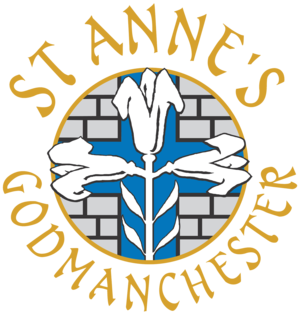Computing
Our aims and intent
We live in a digital work and children have grown up surrounded by technology. However, just because young people have grown up with technology it does not mean that they have the knowledge, skills and abilities to use it safely and competently or that they are able to utalise it to its full potential.
The Computing Curriculum at St Anne’s has been developed using well researched units of study from Teach Computing produced by the National Centre for Computing Education (NCCE) funded by the Department of Education (DFE). We have also utilised units of work aimed at our Reception children from Barefoot Computing. Our E Safety curriculum is founded in the knowledge and skills shared by the National Online Safety organisation. For more details about our E Safety curriculum, click here.
We have bought together materials from all of these organisations and have developed a curriculum with Computational Thinking at its heart.
What is Computational Thinking?
This is a technical term for the set of problem solving skills that were pinpointed by a number of computer scientists when they looked at how they solved problems. Often, but not always, the solutions they came up with involved building some kind of technology to help them solve the problem, but always they involved these problem solving skills - Computational Thinking skills
The key elements of Computational Thinking are:
Collaboration - Playing and working together
Creating - Making things. Checking and fixing things.
Tinkering - Playing and exploring
Persevering - Learning from mistakes and not giving up.
Pattern - Includes comparing, grouping, spotting similarities an differences and working out rules.
Logical Reasoning - Anticipating, predicting and explaining.
Abstraction - Working out what is important and ignoring what is not. Naming, labelling and sticking to a main theme and summarising
Algorithms - Instructions and sequencing
Decomposition - Breaking problems down into steps.
Implementation
Our pupils develop the computational-thinking skills associated with programming, such as decomposing processes/problems into a sequence (algorithm). They will gain experience of turning algorithms into code for programmable toys such as Bee-Bots. Programming languages such as block (or visual) and text based coding are also used to create simple animations or interactive scenes. In doing so, pupils will learn the important skill of debugging, as programs rarely function as intended first time around! They begin to use three key concepts within code – sequence, selection and repetition and introduce variables to the programs they produce.
Our pupils also explore the workings of computer networks. This includes local networks within school and the worldwide network we call the internet. Our pupils will consider which services are made possible through networking computers, and the computer science behind how such services work.
Impact for children
Computational thinking provide children with opportunities to develop other skills such as collaboration and teamwork as well as problem solving. Key areas of our Computing Curriculum also have positive impacts on other areas of the curriculum including English and maths.
By providing children with a firm foundation in Computing skills and knowledge and helping them understand how to use technology safely, they will prepared for the next stage of their education and ultimately for the jobs and professions of the future.
The Curriculum Coverage Documents for each year group are available here:
Computational Thinking Coverage EYFS
Computing Curriculum Coverage Year 1
Computing Curriculum Coverage Year 2
Computing Curriculum Coverage Year 3
Computing Curriculum Coverage Year 4

